Why did the Humming-bird Hawk-moth die?
After I filmed the moth I thought I would add a little more to the article and did some research. Read on to find out what killed the moth and several others. You may be shocked!
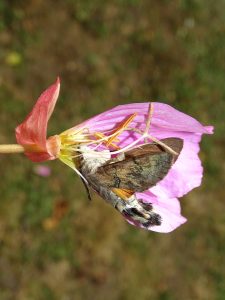
Read on to find out how the moth died.
Humming-bird Hawk-moth feeding upon lavender
I was filming the wildflower meadow, which has changed over the years as you can clearly see below, and out of the corner of my eye, I saw something flash by. It was a Humming-bird Hawk-moth, Macroglossum stellatarum, the first I have ever had in my garden. What an apt name for this beautiful moth. The wing motions are just like a humming-bird, as it flits from flower to flower, feeding upon the nectar.
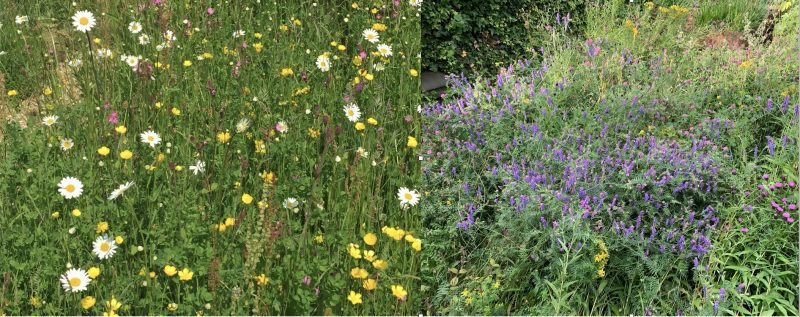
2015 2019
NB. How flowers have changed over 4 years.
Day flying moths
The RSPB describes them as day-flying moths, it being swift on the wing and an expert hoverer. They state that it feeds upon red valerian, honeysuckle, jasmine, Buddleia, lilac, Escallonia, petunia and phlox. They are also known to breed regularly in the UK. To breed we need to plant larval food plants.
Caterpillar food plants
If you want to encourage these magnificent moths into your garden, plant some plants for their caterpillars. Butterfly Conservation state that the caterpillars can be found between June and October and feed upon Lady’s Bedstraw (Galium verum), Hedge Bedstraw (Galium album) and Wild Madder (Rubia peregrina). Moths have also been seen laying eggs on Red Valerian (Centranthus ruber).
Long proboscis a disadvantage?
Whilst having a long proboscis can help this moth species gain access to nectar deep with certain flowers, it can also be a huge disadvantage.
Oenothera speciosa the Humming-bird Hawk-moth killer
Oenothera speciosa is a species of evening primrose also known as white evening primrose or pink ladies. It was originally found in the southern parts of North America and introduced to Europe. It is a herbaceous perennial with white flowers during the day becoming pink in the evening. Many of them are pollinated by large nocturnal moths. Its flowers are ‘open’ both day and night.
Flower-trap
Some interesting M. stellatarum and O.speciosa interactions have been observed in Bulgaria, by several independent non-specialist observers. M. stellatarum is a native European mainland moth and as mentioned now visits and breeds in the UK. Some species of moth including M. stellatarum had their proboscis trapped inside the flower when visiting it for nectar. Some were temporarily trapped and managed to self-escape, except for the M. stellatarum specimens, which after hovering then struggling to free themselves, died from exhaustion, their proboscis still trapped inside the flower. Scientist in Bulgaria undertook research to explain why this happened. They discovered that the trichomes in the tube grooves of the flower, ‘anchored’ themselves into the proboscis which required considerable effort and strength by the moth to pull it out of the ‘flower-trap’. More powerful moths could escape and moths with more slender and shorter proboscis were not affected as were honeybees, Apis mellifera. The scientist gave a very detailed explanation.
Their Conclusion
“It is impossible to estimate with any degree of accuracy how many moths were killed by O. speciosa, but during three days a total of twelve captured moths were found from a small area with around 50 single flowers. Therefore we consider that the growing of O. speciosa in gardens in Bulgaria is undesirable, particularly as there is no adequate assessment of its true impact on wild populations of M. stellatarum and other insects.
“Regardless of the different mechanisms of trapping, the killing of indigenous insect species by introduced plants during flower-visiting certainly deserves further assessment of its ecological impact”.
Flowers to grow in your garden to attract this moth
Besides this mentioned above, adults feed upon nectar obtained from lavender, as shown above, and other such flowers that have a trumpet-shaped flower into which the moth can use its proboscis to gain the nectar at the bottom. I won’t be planting white evening primrose, pretty as they are! Oenothera missouriensis, Ozark Sundrop, may well be a better choice. It does have the RHS Plants for Pollinators symbol.
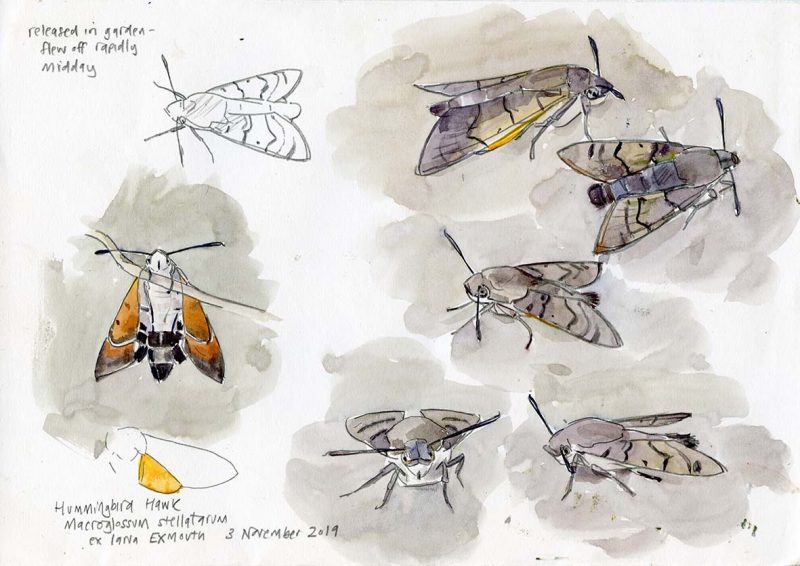
Humming-bird Hawk-moth life cycle by John Walters adults
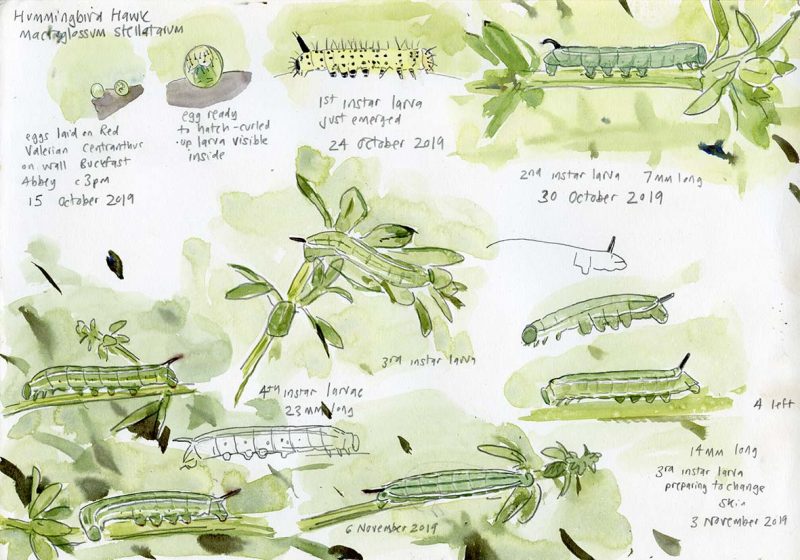
Eggs and caterpillars
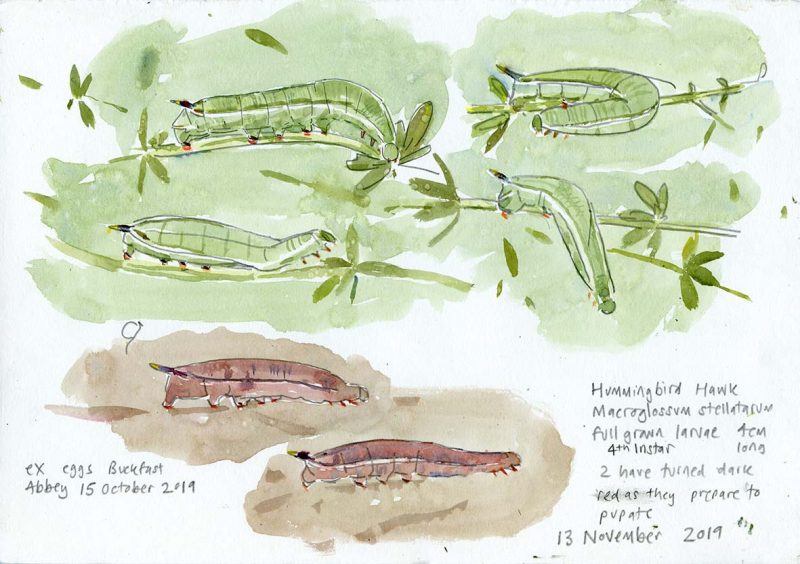
Turning dark ready to pupate
Refs
Besides my own observations and links to websites:
Zlatov B et al 2017, Oenothera speciosa versus Macroglossum stellatarum: killing beauty
Thanks to Dr Boyan Zlatkov for the photograph of the dead humming-bird hawk-moth, Dr James Cane for Ozark Sundrop recommendation and John Walters for his exquisite drawings.

I have always been suspicious to introduction of non-native species. Apart from unexpected effects on the local biota which they can cause, to my impression they easily can become invasive e.g. especially in Southern Europe.
It would be interesting to know how wide-spread this unusual moth-plant interaction is; are there different cultivars with different capabilities for holding moth proboscides?